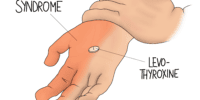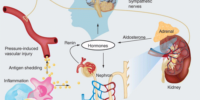How to Incorporate Breathing Techniques in Pain Management

This article aims to provide a comprehensive guide on incorporating breathing techniques in pain management.
It explores different types of breathing techniques, their benefits, and step-by-step instructions for practicing them to alleviate pain.
Additionally, it discusses how to choose the most suitable breathing technique for individual pain and how to integrate these techniques into a pain management routine.
Furthermore, it highlights common mistakes to avoid and offers tips for success when using breathing techniques for pain relief.
Key Takeaways
- Deep breathing techniques, such as slow, deep breaths through the nose and exhaling through the mouth, can help reduce pain and promote relaxation.
- Mindfulness-based breathing techniques, such as body scan and loving-kindness meditation, can cultivate awareness of bodily sensations and compassion towards pain, improving pain management.
- Breathing techniques for stress relief and mindfulness have gained popularity in pain management as they can improve pain tolerance, reduce anxiety, and enhance overall well-being.
- Incorporating breathing exercises, such as deep breathing and the 4-7-8 technique, can promote relaxation, reduce heart rate and blood pressure, and effectively manage stress and anxiety associated with pain.
Types of Breathing Techniques for Pain Management
Various types of breathing techniques have been developed and utilized for pain management purposes. Breathing techniques for stress relief, mindfulness, and pain management have gained popularity in recent years.
One such technique is deep breathing, which involves taking slow, deep breaths through the nose, filling the lungs with air, and exhaling slowly through the mouth.
Another technique is diaphragmatic breathing, which focuses on engaging the diaphragm to promote relaxation and reduce pain.
Additionally, mindfulness-based breathing techniques, such as the body scan and loving-kindness meditation, can help individuals become more aware of their bodily sensations and cultivate a compassionate attitude towards their pain.
These techniques have been found to improve pain tolerance, reduce anxiety, and enhance overall well-being.
Benefits of Incorporating Breathing Techniques in Pain Management
Numerous advantages arise from the integration of controlled respiration methods in the context of alleviating physical discomfort. Breathing techniques have been found to be effective in managing pain, reducing anxiety, and promoting mindfulness. By incorporating these techniques into pain management, individuals can experience significant improvements in their overall well-being. Table 1 provides a visual representation of the benefits of incorporating breathing techniques in pain management.
| Benefits | Description |
|---|---|
| Pain relief | Controlled breathing can help reduce pain perception and provide relief. |
| Anxiety reduction | Breathing techniques are effective in calming the mind and reducing anxiety. |
| Mindfulness promotion | Focusing on the breath promotes mindfulness, allowing for better pain management. |
Step-by-Step Guide to Practicing Breathing Techniques for Pain Relief
This discussion focuses on the benefits of deep breathing, techniques for reducing pain, and breathing exercises for relaxation.
Deep breathing has been shown to have numerous benefits, including improved oxygenation, reduced stress levels, and enhanced relaxation.
Techniques for reducing pain involve utilizing specific breathing patterns and exercises to alleviate discomfort.
Breathing exercises for relaxation aim to promote a state of calmness and tranquility.
Benefits of Deep Breathing
Evidence from clinical studies indicates that deep breathing can provide several advantages for pain management, such as reducing anxiety and promoting relaxation. Mindfulness and pain have been extensively studied, and deep breathing has emerged as an effective technique for pain relief. By focusing on the breath and bringing attention to the present moment, individuals can cultivate a sense of calm and alleviate the physical and emotional distress associated with pain. Moreover, deep breathing techniques have shown to activate the body’s relaxation response, leading to a decrease in heart rate, blood pressure, and muscle tension. This relaxation response can help individuals manage anxiety and stress, which are often associated with chronic pain conditions. Incorporating deep breathing into pain management strategies can thus enhance overall well-being and quality of life.
| Benefits of Deep Breathing | |
|---|---|
| 1. Reduces anxiety | Deep breathing can help individuals manage anxiety and create a sense of calmness. |
| 2. Promotes relaxation | By activating the body’s relaxation response, deep breathing can alleviate physical and emotional distress associated with pain. |
| 3. Decreases heart rate | Deep breathing techniques have been shown to reduce heart rate, promoting a sense of relaxation. |
| 4. Lowers blood pressure | Studies have demonstrated that deep breathing can lead to a decrease in blood pressure levels, contributing to overall well-being. |
Techniques for Reducing Pain
Various methods have been explored to alleviate discomfort and enhance well-being. When it comes to pain management, alternative techniques have gained attention due to their potential effectiveness and minimal side effects.
Types of meditation techniques are one such alternative approach that has shown promise in reducing pain. Mindfulness meditation, for example, involves focusing one’s attention on the present moment without judgment, which can help individuals better cope with pain sensations.
Another technique is loving-kindness meditation, which cultivates positive emotions and compassion towards oneself and others. These techniques have been found to enhance pain tolerance, decrease pain severity, and improve overall well-being.
Incorporating meditation into pain management offers a holistic approach that addresses both the physical and psychological aspects of pain, providing individuals with additional tools to manage their discomfort.
Breathing Exercises for Relaxation
Breathing exercises can be employed as a relaxation technique, offering individuals a method to alleviate stress and promote a sense of calm. These exercises are particularly effective in reducing anxiety and can be incorporated into daily routines to manage stress levels. Deep breathing, also known as diaphragmatic breathing, involves taking slow, deep breaths, filling the lungs fully and exhaling slowly. This technique activates the body’s relaxation response, reducing heart rate and blood pressure. Another breathing exercise for stress and anxiety is the 4-7-8 technique, which involves inhaling for a count of four, holding the breath for a count of seven, and exhaling for a count of eight. This technique helps calm the mind and induces relaxation. Practicing these breathing exercises regularly can provide individuals with a simple yet effective tool to manage stress and anxiety.
| Breathing Exercise | Benefits |
|---|---|
| Deep Breathing | Reduces heart rate and blood pressure |
| 4-7-8 Technique | Calms the mind and induces relaxation |
Table 1: Breathing exercises for stress and anxiety
How to Choose the Right Breathing Technique for Your Pain
To select the most appropriate breathing technique for pain management, it is essential to consider factors such as the type and intensity of the pain, individual preferences, and the specific goals of the pain management strategy.
When choosing breathing techniques for pain relief, it is important to keep in mind the following:
- Type and intensity of pain: Different breathing techniques may be more effective for different types of pain. For example, deep diaphragmatic breathing may be beneficial for chronic pain, while paced breathing may be more suitable for acute pain.
- Individual preferences: Some individuals may prefer certain breathing techniques over others. It is important to respect individual preferences and choose a technique that the person feels comfortable and confident using.
- Specific goals: The goals of the pain management strategy should also be taken into account. For instance, if the goal is to reduce anxiety, a breathing technique that focuses on relaxation and calming the mind may be more appropriate.
Considering these factors can help in selecting the most suitable breathing technique for pain management.
Integrating Breathing Techniques Into Your Pain Management Routine
This discussion explores the integration of breathing techniques into a pain management routine.
Key Point 1: Breath and relaxation
Breath and relaxation techniques have long been recognized as effective tools for managing pain, promoting relaxation, and reducing stress.
Key Point 2: The mind-body pain connection
The mind-body pain connection highlights the interplay between psychological factors, such as stress and anxiety, and physical pain. This connection emphasizes the importance of addressing both aspects for effective pain management.
Key Point 3: Benefits of conscious breathing
Lastly, conscious breathing techniques offer various benefits. These include increased oxygenation, improved focus and mindfulness, and the activation of the body’s relaxation response. All of these benefits contribute to a more holistic approach to pain management.
Breath and Relaxation
One effective method for incorporating breath and relaxation techniques in pain management is through the utilization of controlled breathing exercises.
These exercises involve consciously regulating the breath to promote relaxation and reduce stress.
By focusing on the breath, individuals can cultivate breath awareness, which involves paying attention to the sensations and rhythm of the breath.
This heightened awareness can help individuals become more present in the moment and engage in a mindfulness practice.
Mindfulness involves intentionally focusing one’s attention on the present moment, without judgment.
Incorporating breath awareness and mindfulness into pain management can provide individuals with a tool to manage their pain more effectively.
It can help reduce anxiety, promote relaxation, and enhance overall well-being.
Mind-Body Pain Connection
The connection between the mind and body in relation to pain is a topic of significant interest in various fields of study.
Mindfulness meditation and guided imagery are two approaches that have gained attention for their potential in managing pain.
Mindfulness meditation involves focusing one’s attention on the present moment and accepting it without judgment, while guided imagery uses visualization techniques to create positive mental images that can alleviate pain.
Research suggests that both practices can help individuals reduce pain intensity, improve pain tolerance, and enhance overall well-being.
Mindfulness meditation has been shown to modulate pain perception by activating brain regions involved in emotion regulation and reducing the activity of areas associated with pain processing.
Guided imagery, on the other hand, may distract the mind from pain signals and promote relaxation, leading to decreased pain perception.
Further research is needed to fully understand the mechanisms underlying the mind-body pain connection and to optimize the use of mindfulness meditation and guided imagery in pain management.
Benefits of Conscious Breathing
The mind-body connection is well-established, and research suggests that utilizing deep breathing techniques and mindfulness meditation can be beneficial for pain management. By incorporating these practices into one’s daily routine, individuals may experience a reduction in pain intensity and an improvement in overall well-being.
Deep breathing techniques, such as diaphragmatic breathing and paced breathing, can help activate the body’s relaxation response, leading to decreased muscle tension and pain perception.
Mindfulness meditation, on the other hand, involves focusing one’s attention on the present moment without judgment, allowing individuals to develop a non-reactive and accepting attitude towards pain sensations. This can lead to a decrease in pain-related distress and an increased ability to cope with chronic pain.
Ultimately, practicing deep breathing techniques and mindfulness meditation may offer individuals an effective and accessible means of managing pain.
- Deep breathing techniques activate the body’s relaxation response.
- Mindfulness meditation helps develop a non-reactive attitude towards pain sensations.
- Both practices can lead to decreased pain perception and improved coping abilities.
Common Mistakes to Avoid When Using Breathing Techniques for Pain Management
To optimize the effectiveness of breathing techniques in pain management, it is crucial to avoid common mistakes that may hinder their therapeutic benefits.
One common mistake is shallow breathing, where individuals only use the upper chest and neglect the lower lungs. This type of breathing limits the amount of oxygen that reaches the body and can impede pain relief.
Another mistake is holding the breath during deep inhalation or exhalation. This can create tension in the body and disrupt the flow of oxygen, thus reducing the effectiveness of the technique.
Additionally, rushing through the breathing exercises or not practicing regularly can diminish their impact.
To ensure success with breathing techniques for pain management, individuals should focus on deep belly breathing, avoid breath holding, practice regularly, and seek guidance from a trained professional if needed.
Tips for Success in Using Breathing Techniques for Pain Relief
Optimizing the effectiveness of breathwork for pain relief involves focusing on deep belly breathing, regular practice, and seeking guidance from trained professionals if necessary. Mindfulness techniques and visualization exercises can further enhance the benefits of breathing techniques in managing pain.
Here are four tips to ensure success in using breathing techniques for pain relief:
- Cultivate a mindful state: By bringing awareness to the present moment and focusing on the breath, individuals can better manage their pain and reduce anxiety.
- Practice deep belly breathing: This technique involves breathing deeply into the diaphragm, allowing for better oxygenation and relaxation of the body.
- Incorporate visualization exercises: By imagining a peaceful and pain-free state during breathwork, individuals can promote a sense of calm and reduce pain sensations.
- Maintain a regular practice: Consistency is key in reaping the benefits of breathwork. Regular practice can lead to long-term pain relief and improved overall well-being.
Frequently Asked Questions
Are Breathing Techniques the Only Form of Pain Management That I Should Use?
Breathing techniques alone may not be the only form of pain management to consider. Alternative pain management methods, such as medication or physical therapy, can be beneficial. Combining breathing techniques with other approaches may enhance overall pain management outcomes.
Can Breathing Techniques Be Used in Combination With Medication for Pain Management?
Breathing techniques can be utilized in conjunction with medication for pain management. They can be considered as part of alternative therapies and non-pharmacological approaches to alleviate pain and promote overall well-being.
How Long Does It Typically Take for Breathing Techniques to Provide Relief From Pain?
The effectiveness of breathing techniques in relieving pain varies, and the time it takes for relief to occur can differ depending on the individual and the specific pain condition. Further research is needed to determine typical timeframes.
Can Breathing Techniques Be Used for Both Acute and Chronic Pain?
Breathing techniques can be used for both acute and chronic pain. They provide relief by reducing stress and anxiety, promoting relaxation, and improving oxygenation. Breathing exercises are effective for managing pain long term.
Are There Any Specific Breathing Techniques That Are More Effective for Certain Types of Pain?
There is ongoing research on the effectiveness of breathing techniques in pain management. Different types of pain may require specific breathing techniques. However, further studies are needed to determine the optimal breathing techniques for each type of pain.









